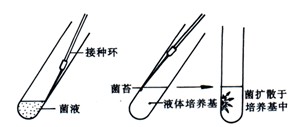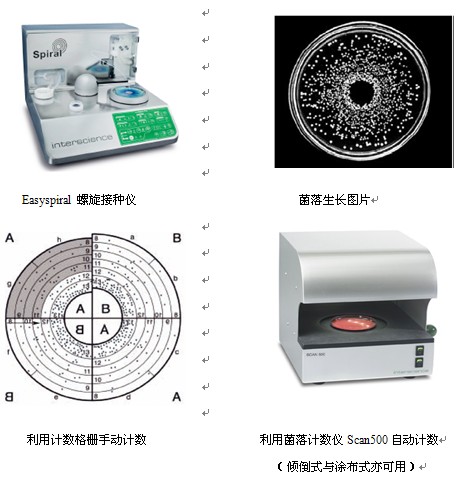There are many kinds of bacterial inoculation methods, such as streaking method, coating method, pouring method, inclined surface inoculation method, liquid culture medium inoculation method, spiral inoculation method, etc. The methods and applications are different. The following explanations are provided to help the experimenters Choose an operation.
Scribing method: This method is mainly used for the purification of bacterial strains, to obtain a single colony, dip a little of the material to be separated from the inoculation ring, and perform parallel scoring, fan-shaped scoring or other forms of continuous scoring on the surface of the sterile plate. The number of cells will decrease with the increase of the number of streaking, and gradually spread out. If the streaking is appropriate, the microorganisms can be dispersed one by one. After cultivation, single colonies can be obtained on the surface of the plate.
Advantages: You can observe the characteristics of the colonies and separate the mixed bacteria.
Disadvantages: Can not be used for colony counting.

Coating method: This method is mainly used for counting the total number of colonies. The medium is first melted and poured into a sterile plate while hot, and then a sterile pipette is used to inoculate 0.1ml of bacterial solution on the solidified agar plate. Then use a sterile L-shaped glass rod to spread the bacterial solution on the plate evenly. Place the coated plate on the table for 20 ~ 30min to allow the bacterial solution to penetrate into the medium, then invert the plate and incubate the culture until it grows. It can be counted after the bacteria come out.
Advantages: You can count, you can observe the characteristics of the colony.
Disadvantages: gradient dilution before inoculation, less absorption, more troublesome, the plate does not dry well, it is easy to spread.
Pour method: This method is mainly used for counting the total number of colonies. Draw 1ml of bacterial solution into the plate, pour the bacterial culture medium that has been melted and cooled to 45 ~ 50 ℃, gently turn the plate to mix the bacterial solution and the medium evenly. Invert after suspicion and cultivate at a moderate temperature. It can be counted after the growth of bacteria.
Advantages: can count, more convenient.
Disadvantages: Prior to inoculation, gradient dilution is required, and colony characteristics cannot be observed. It is not suitable for strictly aerobic bacteria and heat-sensitive bacteria.
Inclined surface inoculation method: This method is mainly used to preserve bacterial species, or to observe certain biochemical characteristics and power of bacteria. Use an inoculation ring or inoculation needle to extend into the inoculation tube to pick colonies for transplantation. Extend into the slant culture tube, first drag an inoculation line from the bottom to the top of the slant, and then meander from the bottom to the top, or directly from the bottom to the top. After the inoculation is completed, the mouth of the culture tube is sterilized by flame, and a cotton plug is plugged and placed at 37 ° C for cultivation. 
Liquid medium inoculation method: This method is mainly used for picking colonies or specimens with a sterilization inoculation ring for bacterial turbidity experiments, and gently grinding at the junction of the inner wall of the test tube and the liquid surface to make the bacteria evenly scattered in the liquid medium. 
Spiral inoculation method: This method is mainly used for counting the total number of colonies
Spiral plater can quickly inoculate bacteria without any full or intermediate dilution. The log-reduced sample volume is automatically dispensed on the surface of the rotating medium in the form of an Archimedes spiral. The volume of each point on the medium can be known and calibrated. The concentration of the bacterial solution can be calculated by dividing the number of colonies in a certain area on the petri dish by the sample injection volume in the same area.
Advantages: Spiral inoculation method does not require dilution (other inoculation methods require gradient dilution to count the number of colonies), automated inoculation, high efficiency, can save 3/4 of consumables and time Disadvantages: high product cost, suitable for sample comparison Big experiment 
Rosewood Oil,Sandalwood Essential Oil,Eucalyptus Oil,Australia Tea Tree Oil
Ji'An ZhongXiang Natural Plants Co.,Ltd. , https://www.zxessentialoil.com